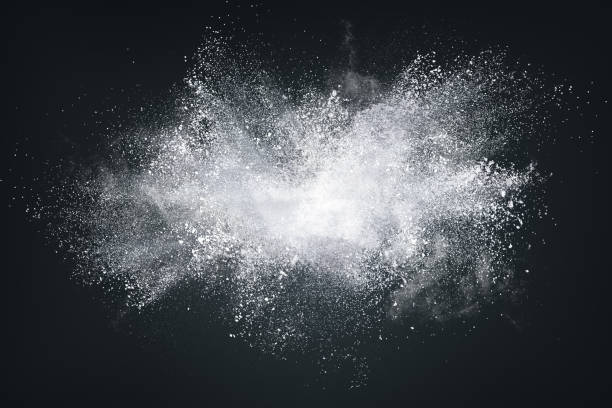Mass Tort Case Timelines: What to Expect Legally

📘 Understanding Mass Tort Case Timelines
Mass tort cases are complex legal actions involving multiple plaintiffs who have suffered similar injuries due to a shared defendant, such as a pharmaceutical company, manufacturer, or polluter. Unlike class actions, each plaintiff in a mass tort maintains a separate claim while benefiting from collective legal strategies.
These lawsuits commonly stem from defective drugs, environmental contamination, or product failures. Understanding how long mass tort cases take is vital for those considering joining such litigation. Timelines can span months to over a decade, depending on several factors including case complexity, number of plaintiffs, and court dynamics.
Whether you’re a potential claimant or a curious reader, this guide offers a detailed breakdown of each phase in a mass tort case—from pre-litigation preparation to appeals.
Ready to connect with top legal professionals? Get immediate support— Call us at 877-550-8911.
⏱️ Key Factors Influencing Case Duration
The length of a mass tort case varies significantly due to multiple factors:
1. Complexity of Claims
Cases involving multiple injuries, scientific analysis, or corporate cover-ups demand extensive investigation and expert testimony.
2. Number of Plaintiffs
More plaintiffs mean more evidence to collect and coordinate, often prolonging proceedings.
3. Jurisdiction & Court Backlogs
Some jurisdictions process cases faster than others. Courts with heavy caseloads can delay hearings and trials.
4. Readiness to Settle
If parties are open to negotiations, a settlement might resolve the case faster than going to trial.
5. Resource Availability
Legal teams with stronger financial and staffing resources can conduct investigations and negotiations more efficiently.
Understanding these elements is key to setting realistic expectations. Learn more at Justia’s Mass Tort Guide.
📄 Typical Timeline of a Mass Tort Case
Here’s how the general mass tort process unfolds:
🔹 Filing and Complaint
After injury documentation and legal review, a complaint is filed. This step may take several months of preparation, especially if numerous plaintiffs are involved.
🔹 Preliminary Hearings
Courts may take weeks to months to schedule these initial hearings, which determine trial logistics and timelines.
🔹 Discovery Phase
Lasting anywhere from months to years, discovery involves information exchange, expert reports, depositions, and more.
🔹 Settlement Talks or Trial
If settlement talks fail, the case heads to trial, which can stretch over several months depending on the complexity and court schedules.
From start to finish, most mass tort cases span 2 to 5 years, but some can continue for over a decade.
🧾 Pre-Litigation Phase: A Critical Start
Before a case reaches court, there’s the pre-litigation phase, which includes:
-
Reviewing medical and injury records
-
Interviewing witnesses
-
Retaining experts
-
Filing notices to defendants
This groundwork is vital to avoid unnecessary delays. Many defendants opt to negotiate early settlements to avoid drawn-out litigation. However, if pre-litigation efforts aren’t thorough, it could add years to the case timeline.
For a deeper look into this process, explore our resources at Legal Case Review.
🔍 Discovery Phase: The Longest Step
Discovery is often the most prolonged and resource-intensive stage of a mass tort lawsuit. It includes:
-
Depositions: Questioning plaintiffs, defendants, and experts
-
Document Exchange: Reviewing internal corporate records and communications
-
Interrogatories: Written questions that must be answered under oath
This stage alone can last several years, particularly in cases involving technical evidence or thousands of claimants. It’s also common for legal teams to contest what information must be shared, which may require judicial rulings and cause further delays.
🤝 Settlement Negotiations: Will It End Here?
In many cases, especially after discovery, both parties will explore settlement options. This may occur through:
-
Mediation or Arbitration
-
Mass settlement programs
-
Private negotiations
Settlements are appealing because they offer compensation without the unpredictability of a trial. However, agreeing on fair compensation for all plaintiffs can be time-consuming. Negotiations may last months or even years, especially if multiple defendants are involved or if plaintiffs’ injuries vary widely in severity.
⚖️ Trial Phase: The Legal Battleground
If no settlement is reached, the mass tort moves to trial. This phase involves:
-
Presentation of evidence and expert testimony
-
Witness cross-examinations
-
Jury instructions and deliberation
While some trials are resolved in a few weeks, others—especially bellwether trials that test key issues—can drag on for months. Furthermore, high-stakes mass tort trials often involve multiple trials in different jurisdictions.
Jury decisions may lead to renewed settlement talks or spark appeals.
 📑 Post-Trial & Appeals: The Final Stretch
📑 Post-Trial & Appeals: The Final Stretch
Even after a verdict, a mass tort case might not be over. The losing party can file:
-
Motions for retrial
-
Appeals to higher courts
-
Requests for reduced damages
Appeals can take anywhere from several months to several years, depending on court availability and legal complexity. During this time, plaintiffs may not receive any compensation—even after winning at trial.
For example, in the Johnson & Johnson talcum powder cases, appeals and retrials extended the litigation for years after the initial verdicts.
🧠 Conclusion: Be Informed, Be Prepared
Mass tort cases are not fast-moving legal actions. They demand patience, strong legal support, and realistic expectations. While some resolve in two to three years, others stretch across a decade due to complexities in evidence, coordination, and court proceedings.
If you’re considering joining a mass tort, ensure you work with experienced legal professionals. For more insights and legal updates, visit LegalCaseReview.com.
✅ Optional FAQ Section (Good for SEO)
Q: How do mass torts differ from class action lawsuits?
A: Mass torts allow each plaintiff to have a unique claim, whereas class actions group all plaintiffs under one lawsuit with a shared outcome.
Q: Can I join a mass tort after it starts?
A: Yes, but eligibility depends on factors like timing, evidence, and ongoing proceedings. Consult an attorney early.
Q: Will I need to testify in court?
A: Not always. Many plaintiffs never testify, especially if the case is resolved via settlement.
Don’t wait to secure the legal representation you deserve. Visit Legal Case Review today for free quotes and tailored guidance, or call 877-550-8911 for immediate assistance.




